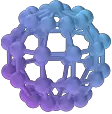Intelligent Document Processing (IDP): The Future of Healthcare Documentation
With the growing volume of patient data, healthcare providers can find it overwhelming to process these excessive amounts of data; traditional methods of documentation can lead to errors and inefficiencies so past methods that need to be improved as they are proving inadequate. Intelligent Document Processing is a new solution. This technology can process healthcare documentation through automation, artificial intelligence, and advanced data extraction techniques. IDP can improve patient outcomes and operational efficiency by changing the way healthcare providers manage documentation.

Understanding IDP
Intelligent Document Processing uses machine learning, natural language processing (NLP), and optical character recognition (OCR) to automate the extraction, classification, and management of data from different types of documents. In healthcare, IDP can handle a variety of documents, such as patient records, insurance claims, discharge summaries, and lab reports. IDP can turn unstructured data into organized formats, which makes it easier to analyze, retrieve, and use information effectively.
Benefits of IDP Documentation in Healthcare
- Increased Accuracy: Advanced algorithms make sure that data is captured accurately, reducing the risk of mistakes which is crucial for patients’ security and safety. IDP reduces errors that would be made from manual data entry by automating the extraction of information.
- Time Efficiency: Healthcare professionals can often spend a lot of time on documentation tasks. IDP streamlines these processes, allowing clinicians to focus more on patient care rather than admin. By automating repetitive tasks, IDP can significantly reduce the time spent on documentation, which enhances overall productivity.
- Improved Compliance: Staying compliant with regulations is essential in healthcare. IDP helps organizations meet these requirements by ensuring that documentation is accurate, complete, and readily accessible. Additionally, automated auditing features can pinpoint compliance gaps, making it easier for organizations to tackle potential issues before they become serious problems.
- Enhanced Data Accessibility: With IDP, healthcare providers can access critical patient information quickly and easily. By converting documents into searchable formats, IDP enables clinicians to retrieve necessary data at the point of care, facilitating informed decision-making and improving patient outcomes.
- Cost Reduction: By reducing the time spent on documentation and minimizing errors, organizations can save on labor costs. Furthermore, the improved efficiency of documentation processes can lead to faster billing cycles and better cash flow management.
The Future of Healthcare Documentation with IDP
As the healthcare industry continues to evolve, the importance of IDP will only increase. Future advancements in AI and machine learning will enhance IDP’s capabilities, enabling even more sophisticated data extraction and analysis. By integrating IDP with electronic health records (EHR) systems, healthcare organizations can ensure a smooth flow of information, which improves collaboration among providers and, ultimately, patient care.
Challenges in Implementing Intelligent Document Processing

While Intelligent Document Processing (IDP) offers numerous advantages for healthcare organizations, such as improved efficiency and enhanced data accuracy, the journey to its successful adoption is not without its challenges. As organizations strive to integrate this innovative technology, they may encounter various obstacles that need careful consideration and strategic planning.
Integration with Existing Systems:
Integrating IDP solutions with current healthcare IT systems can be quite complex. Many organizations already have established workflows, and bringing in new technology requires careful planning and customization.
Data Privacy Concerns:
Protecting patient data is paramount in healthcare. IDP solutions must comply with strict regulations like HIPAA, which governs how patient information is handled. Organizations need to thoroughly vet IDP vendors and continuously monitor compliance to avoid legal issues and protect their reputations.
Change Management:
The transition from manual to automated processes often requires more support from staff. Many employees may feel uncertain about new technologies or fear job displacement. Effective change management strategies, including training and open communication, are essential to address these concerns and promote a positive attitude towards IDP adoption.
Conclusion
Intelligent Document Processing is poised to revolutionize healthcare documentation, driving improvements in accuracy, efficiency, and compliance. By automating time-consuming tasks, IDP allows healthcare professionals to concentrate on what matters. As the industry moves towards a more data-driven future, the adoption of IDP will be essential in overcoming the challenges of healthcare documentation and ensuring better outcomes for patients and providers alike. Embracing this technology is a necessity for any healthcare organization aiming to thrive in the digital age.



